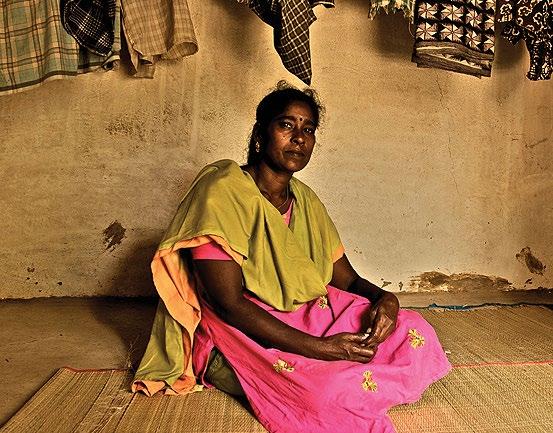
2 minute read
India’s shadow pandemic and trends of violence against women
from Global-is-Asian 2020 issue
by Lee Kuan Yew School of Public Policy, National University of Singapore
THE RESEARCH SPOTLIGHT SERIES DEEP DIVES INTO RESEARCH PUBLICATIONS AND STUDIES FROM THE LEE KUAN YEW SCHOOL OF PUBLIC POLICY’S FACULTY WHERE WE BREAK DOWN EACH RESEARCH’S KEY POINTS AND POLICY IMPACT.
Featured Faculty: Saravana Ravindran Assistant Professor, Lee Kuan Yew School of Public Policy
Amidst the various problems and disruptions caused by the COVID-19 pandemic and the accompanying lockdowns, a shadow pandemic of violence against women is growing, according to a statement by Phumzile Mlambo-Ngcuka, the Executive Director of UN Women.
In light of this, Assistant Professor Saravana Ravindran at the Lee Kuan Yew School of Public Policy, co-authored COVID-19: “Shadow pandemic” and violence against women with Professor Manisha Shah from the UCLA Luskin School of Public Affairs to investigate the changes in the magnitudes and types of violence against women during the COVID-19 pandemic and lockdowns in India.
Why India? According to Professor Ravindran, India was chosen as the country of interest due to the pervasive problem of gender-based violence in the country. In fact, India has been ranked the most dangerous country for women back in 2018.

In order to take into account the variations of lockdown regulations across India, the authors studied districts categorised into green, orange and red zones in increasing strictness with regards to level of mobility affected.
As for data, the study analysed complaints received from the National Commission of Women (NCW) from January 2018 to May 2020. Instead of looking only at domestic violence complaints, however, the study also examined the impact of lockdown measures on various types of violence like cybercrime, harassment, and rape and sexual assault complaints.
Indeed, the results demonstrate that while the lockdowns led to lower reported rates of rape and sexual assault, they also exacerbated complaints related to domestic violence and cybercrime. In areas with the strictest lockdown regulations, domestic violence complaints increased by 131% in May 2020, and cybercrime complaints also saw a similarly large increase. On the other hand, rape and sexual assault complaints decreased by 119% during the same period in the same areas, which is consistent with reduced female mobility in public spaces, public transport and workplaces. These results show that women are under a variety of threats, and as such, the same policy can improve certain types of violence outcomes while exacerbating others.
Read the full article https://nus.edu/3gLCKD6










